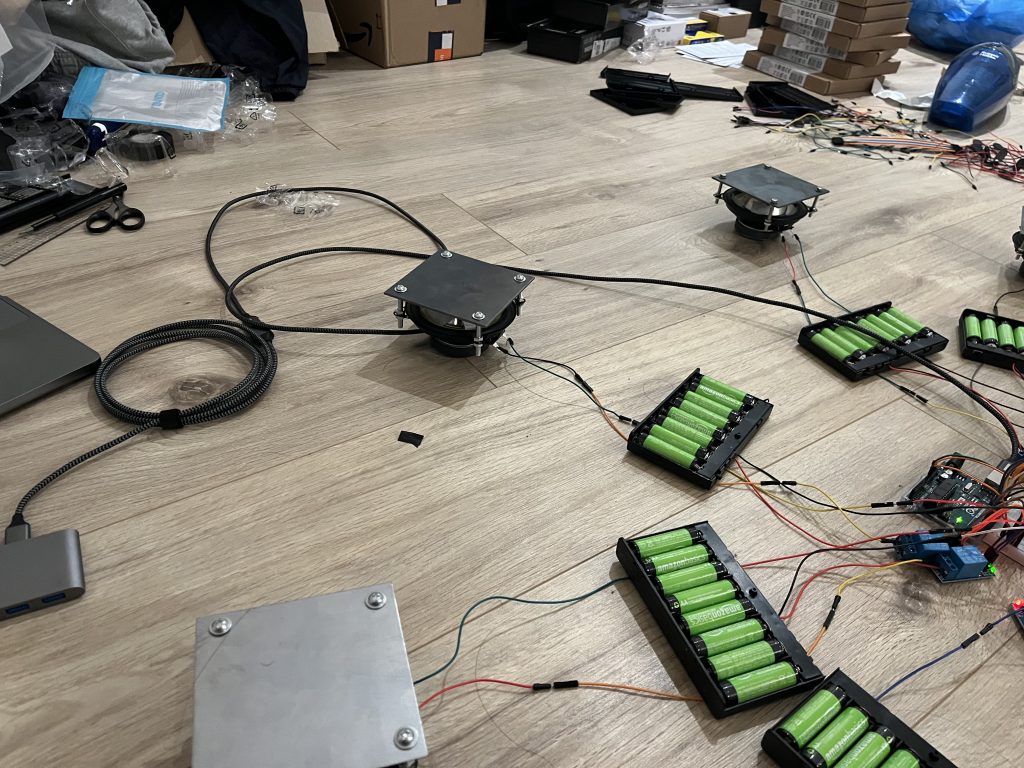Today I received a nickel-metal hydride battery and put it to the test. I’ve had a lot of failures in this project, but this was the batteries’ things that gave me the most frustration. I needed to understand voltage and current, and I had to pay a lot of attention to the total capacity of the battery and how it was connected. My main focus in this test was to make sure that there was enough power (voltage) coming out of the series connection, that the battery would not discharge or overheat during the 16 minute sequence, and that the relay module or speaker coils would not overheat.
Firstly, I could see that the output from the batteries was sufficient. The batteries I used were 1.2v nickel-metal hydride batteries, eight in total, connected in series using a battery holder, and the voltage was 9.6v, which I assumed would be similar to or stronger than the 9v alkaline batteries I had previously used, and fortunately, I got plenty of power as expected.
Secondly, the issue of the battery discharging or overheating is dependent on the current and total capacity of the battery. The 9v alkaline battery I used previously had a current of about 0.2A and a total capacity of 600mAh, which was not enough to meet the 5A voltage required by the speaker I was using. However, the nickel-metal hydride battery had a current of 2A and a total capacity of 2000mAh, which was enough for the sequence length of 16 minutes (5A = 2.5C -> 28 minutes). However, the battery can overheat if the relay module draws unstable current from the battery, so I played the sequence from start to finish, periodically observing or touching the battery and the coil of the relay module speaker to make sure it wasn’t overheating. Fortunately, the batteries were slightly warm, but within normal limits (batteries should be between 0 and 50 degrees Celsius when in use), and the relay coils showed no change in temperature. The speaker’s coils were checked both visually and by touching the underside of the speaker, as there is a risk of burns if you touch them directly, and the coils did not appear to overheat and smoke or redden, and the underside was dangerously warm, but given that the speaker was placed on the floor in the test environment, this should not be a problem for a 16 minute performance.
Finally, I also checked to see if it would work when I increased the connections to connect the computer and Arduino (since the computer would be on the floor and the Arduino would be on the ceiling), and it worked well enough. There is still some noise from the wires making poor contact and touching each other, but this is probably a problem that can be solved by using long copper wire for the actual connection.

This completes the necessary experiments, and I need to quickly prepare a production plan and actual length measurements for actual performance and installation.